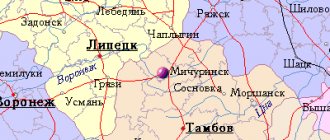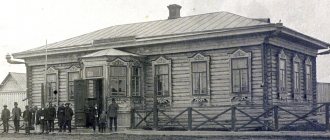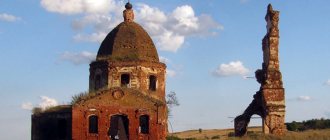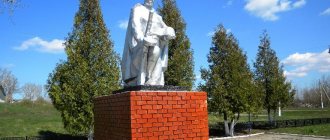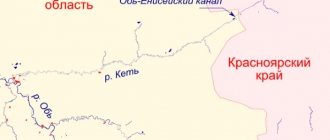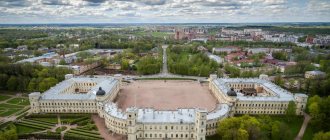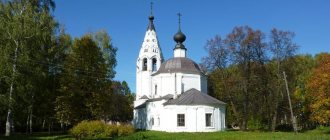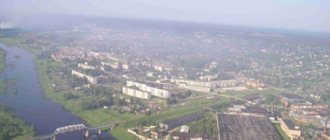When asked what Samara was called before, many will answer “Kuibyshev” and they will be right. However, this name was received by the city during a period when many settlements in the country were renamed in honor of prominent party members and revolutionaries, but its history began much earlier. What name it had before and what role it played in the life of Russia will be discussed in our article.
The first mentions of the Samara River and the city of the same name
The name of the city is directly related to the name of the Samara River, which is a tributary of the Volga. The first mention of it is found in the notes of the secretary of the Arab embassy Ibn Fadlan, who was passing there in May 922. He calls it the Samur River, referring to the name given to it by local nomads. However, the Arab diplomat does not mention any settlements.
About what Samara was called before, that is, before it was officially established on the maps of Russia, researchers have a certain hypothesis, according to which its former name was consonant with the current one. This is evidenced, in particular, by the Venetian map that has come down to us, dating back to 1367, on which a settlement called Samar is indicated in the Middle Volga region.
The settlement of the same name is also shown on another map, compiled in 1459 by the Catholic monk Fra Mauro, who traveled along the Volga. However, there are skeptics who question the legitimacy of identifying ancient Samar with the city that arose on the banks of the Volga in 1586.
Fight to the bitter end
Today it is easy to talk about what happened in our city until the Decree of the Presidium of the Supreme Soviet of the RSFSR was adopted to rename Kuibyshev to Samara and the Kuibyshev region to Samara. But Alexander Zavalny recalls:
— In the winter of 1987, a meeting was held in the city department of culture. And here’s the last question: “Our department began to receive letters from residents asking us to consider a proposal to return the city to its previous name.” An ironic smile ran across the faces of those present. “How dare they! - burst out from one respectable lady. - What are they aiming for? To the sacred name of Valerian Vladimirovich Kuibyshev for every resident of our city!” And one of the party veterans even tried to engage in hand-to-hand combat with the speaker. The heated Zavalny summed up: two or three years will pass, and you will remember this conversation already in Samara.
All participants in the events speak warmly of the young engineer Anatoly Petrov, who was involved in organizing pickets and collecting signatures for appeals to the Supreme Council. He also helped transport bags of “people's will” to Moscow. Petrov's energetic actions had a great influence at the decisive meeting of the regional council, when a fierce discussion unfolded. According to Kabytov’s recollections, the rector of the state university, Lenar Khramkov, took part in it. But even his call to return the city to its historical name did not have the desired effect. The director of the art museum, the fearless Anetta Bass, took the floor without waiting in line. However, the noise and disorder in the hall continued. And then Anatoly Petrov rose to the podium. He tapped the microphone and said: “Comrades, I think it’s time to return the historical name of Samara to our city. Please vote." These simple words decided the outcome of the matter.
A fortress built by the will of the king
It was in this year that the history of Samara began, founded on the banks of the river of the same name, near its confluence with the Volga. The times were extremely turbulent, and in order to protect the region from the constant raids of nomads, as well as to protect the waterway from Kazan to Astrakhan from them, Tsar Fyodor Ioannovich ordered Prince G. O. Zasekin to build a fortress there.
The question of how Samara was formed has been considered by many generations of Russian historians. It was established that by the will of the king, a small fort first appeared, which grew over time and turned into a fortress, which gave rise to a large Volga city. Its foundation and further construction are reflected in detail in the documents that have reached us. They also give the name of the city, which eliminates any doubt about what Samara was called before.
Dynamics by year
Dynamics of the permanent population of Samara over the past 5 years:
- 2015 – 1,171,820 people
- 2016 – 1,170,910 people
- 2017 – 1,169,719 people.
- 2018 – 1,163,399 people.
- 2019 – 1,156,608 people.
- 2020 – 1,156,659 people.
From 2015-2020, the number of residents decreased by 15,161 people. However, at the beginning of 2022, a slight positive growth trend in the number of residents began to be observed.
The first inhabitants of the Samara town
According to historians, the Samara fortress, which has not survived to this day, was located in the part of the city where the valve manufacturing plant is located today. Although in those days they had no idea about shock construction, the sovereign’s order was carried out without delay and the fortress was erected surprisingly quickly - in just three months.
The new Samara town, still smelling of fresh resin (as it was called in the old days), was inhabited by service people - archers, gunners and “collars”, that is, those who were supposed to guard the gates from any dashing people. The boyars' children were also exiled here by decree of the tsar to serve their fatherland.
The history of Samara in the 17th century is a chronicle of continuous work to strengthen and expand it. As a result, by 1700 the city consisted of five defensive lines, which included the Kremlin, two prison lines and the same number of lines of gouges, which were soon destroyed due to disrepair. However, this powerful-looking outpost had a very significant drawback - all its structures were wooden, which had the most detrimental effect during the fires that engulfed the city in 1700 and 1703.
Flag
The flag of Samara is made in the form of a rectangular panel. Its aspect ratio is 1:2 (de facto 2:3 is used). It consists of three equal horizontal stripes: red (top), white (middle) and blue (bottom). On the bottom there is the inscription “Samara”. The city's coat of arms is depicted in the center. The distance from it to the top edge of the flag is 1/7 of the width of the flag. The heights of the capital letter and the crown are equal, the lowercase letters are 1/10 of the width of the composition.
The flag was approved on December 30, 1998 (as amended on October 14, 2014).
From watchtower to industrial giant
Taught by bitter experience, the Samara people erected a new, this time earthen fortress on the site of the former ashes. During archaeological excavations carried out in 2013-2014, the remains of this structure were discovered in the area of Khlebnaya Square.
In 1851, the Samara province was formed, and from then on the city, which became its capital, received a powerful impetus for its economic and cultural development. At the end of the 19th century, Samara was even called “Russian Chicago” for its rapidly growing industrial production and trade. The city, which in those years numbered fifteen thousand inhabitants, was replete with various enterprises, warehouses and steam mills.
It is interesting to note that it was here that for the first time in Russia the horse tram was replaced by a tram, which left the city depot in 1915. As newspapers of the time noted, it was entirely assembled from domestic parts and materials. Samara is the birthplace of the much-loved Zhigulevsky beer, the production of which began in 1881 at a plant owned by the Austrian entrepreneur Alfred von Vacano. By the way, at first it was called “Vienna”, but then received a more patriotic name.
Current data
36 percent of the population of the entire region lives in the territory of the most populous city. The population of Samara is 1,156,659 people. City assessment for 2022:
- Samara took 8th place in the list of large million-plus cities in Russia.
- The city and its surroundings occupy 11th place in the ranking of densely populated regions of the Russian Federation.
- At the end of 2022, Samara took 6th place in the rating of constituent entities of the Russian Federation in terms of the level of development of labor potential and 13th place in Russia in terms of investment potential.
- Samara is a highly urbanized region - 79.8% of citizens of the total population live in urban areas.
- The share of the province's foreign trade turnover in the foreign trade of the Volga Federal District was 12.9%.
- Samara's trading partners are 134 foreign countries.
- There are 700 large and medium-sized industrial enterprises operating on the territory. Based on the results of work in 2022 and the beginning of 2022, Samara took 4th place in the Volga Federal District in terms of the volume of shipped industrial goods.
Second capital of the country
The city played an important role in the life of the country during the Great Patriotic War. It essentially served as the second capital of the Soviet Union. The Government and a number of foreign diplomatic missions moved here, to the banks of the Volga.
In case of emergency, the city was ready to become the headquarters of the Supreme Commander-in-Chief I.V. Stalin. A residence was built especially for him, equipped with an underground bunker. Today it is part of the city museum and is open to visitors.
Area and Density
The region is located in the southeastern part of the Russian Federation. The region is located in the middle reaches of the Volga River. The total area of Samara is 541.4 sq. km. There are a large number of monuments, squares, and parks for families with children. The beautiful city on the Volga is divided into nine administrative districts:
- Industrial: the number of residents of the district in 2022 is 272,498 people.
- Kirovsky - 224,889.
- Sovetsky district – 169,015.
- Oktyabrsky district – 119,451.
- Zheleznodorozhny – 90 530.
- Krasnoglinsky – 99 713.
- Kuibyshevsky - 88,876.
- Leninsky district - 61,276.
- Samara district – 30,411.
The largest part of the population is concentrated in the Industrial District. It is not surprising, because this is where the main educational institutions and the bulk of industrial enterprises are located. The population density of Samara for 2022 is 2136.16 people/km².
City during the war years
In addition to government offices, the city also housed many enterprises evacuated from the western regions of the country, as a result of which the level of industrial production in it increased fivefold during the war years. To supply the front with combat aircraft, a powerful aviation complex was formed in the city, which established the production of such world-famous aircraft as the Il-2 attack aircraft, as well as the Mig-3 fighters.
The Moscow Bolshoi Theater was also located here and continued to operate. An important event in the cultural life of Kuibyshev during the war was the performance in its hall of the seventh Leningrad Symphony, completed by D. D. Shostakovich, who was evacuated here. The city embankment became a unique monument to the war; granite, once taken from defeated Germany, was used for its cladding.
History of Samara
The official history of Samara begins in 1586, when the Samara Town fortress was built on the banks of the Volga River. The order to build an outpost on the southern borders of Russia was proclaimed by Tsar Feodor I the Blessed. And although diplomats told the neighboring Nogai Khanate that the fortress was needed for general protection against thieves and Cossacks, in reality the goal was to control the territory around the Volga River, where many trade routes passed.
However, it is known for certain that the first settlements were here back in the 14th century. There was a trading pier with a small population here, which was noted on the maps of Venetian merchants of that time. It was called Samar. By the way, the name of the fortress, and later the city, comes from the Samara River of the same name, which flows into the Volga.
At first, only soldiers lived in the Samara City fortress, but gradually trade developed here and houses began to appear behind the defensive walls. So in 1688 Samara received its current name and status as a county town. At the beginning of the 18th century, there were more than 200 households here, and several thousand people lived here, not counting various merchants who brought goods from the East. Moreover, during this time the city became the center of two peasant uprisings, which were nevertheless brutally suppressed.
In 1780, various government institutions were opened in Samara: the treasury, courts, city government and other organizations. And in order to streamline the development of the city, in 1782 the mayors approved a general development plan.
The city grew: in 1850 Samara became the center of the new Samara province and 15 thousand people lived here. And half a century later, the population increased to 90 thousand, and after another 15 years - to 150 thousand people. Markets were held weekly, and large fairs were held three times a year, where a wide variety of agricultural goods could be purchased. In 1877, the Orenburg Railway passed through the city. The Samara marina, which received up to 1000 ships per year, was one of the best on the Volga. In addition to developed trade, wheat cultivation was established in the vicinity of Samara and the city became the largest flour producer in all of Russia.
In the 20th century, the development of Samara continued. In 1917-1918, after the February and October revolutions, Soviet power was established here. And in 1935 the city was renamed Kuibyshev, in honor of the famous USSR statesman. The city's name remained until 1991, when the Soviet Union collapsed.
During the Great Patriotic War (1941-1945), people and factories were evacuated here from the western borders. And the city became the center of military aircraft construction - it was here that more than 80% of all Il-2 aircraft were built, which was one of the main attack aircraft against the German Luftwaffe aviation. Thanks to the evacuated enterprises, production in Samara increased 5 times, and the population rose from 400 to 600 thousand. During the war years, Samara made an invaluable contribution to the victory over Nazi Germany.
In the post-war years, Kuibyshev secured its status as the industrial center of the USSR. The aviation industry continued its development, and soon the rocket industry was formed here: Yuri Gagarin, who made the first flight into space in the history of mankind, flew in a rocket assembled by the Samara aerospace enterprise TsSKB-Progress. In addition, the city had a powerful potential for metallurgical, oil refining, heavy and light industries. Along with the growth of the economy, the population also increased: in 1979, 1.2 million people lived in Samara. Moreover, this is actually the maximum population in the history of the city, and today the demographic indicators remain at this level.
During perestroika and the collapse of the USSR, Samara lost its industrial significance. The products of Samara factories did not match the quality, military production became unprofitable, and an economic crisis began in the city, which lasted almost 20 years. But with the beginning of the 21st century, the situation stabilized: enterprises were re-profiled, and the construction segment developed. And today Samara, which began its history with a small fortress, is one of the leading cities in Russia, both in terms of population, culture, science, and industry.
The flag of Samara, which has become a symbol of new times
Throughout the entire period of communist rule, right up to the start of perestroika, party ideologists made every effort to destroy among the people the memory of what Samara was called before. The same trend was observed in other renamed cities in the country.
However, already in 1990, at the very beginning of the democratic transformations that swept the country, the city was returned to its historical name, and eight years later, by decision of the City Duma, the flag of Samara was approved. It would not be an exaggeration to say that for the townspeople it became not only the official symbol of the municipality, but also the visible embodiment of the changes brought by perestroika to the life of every citizen of Russia.
Fell asleep in Kuibyshev, woke up in Samara
And yet, deep down in his soul, Titov himself was not an opponent of innovation. During his student years, he often went to sports competitions in other cities and there he heard that everyone called our fellow countrymen Samarans. The decisive role, according to Titov, was played by the support of the Kuibyshev Regional Executive Committee, which was headed by Viktor Tarkhov. In the end, it was possible to achieve that both the city and the region were renamed at the same time. The residents of Yekaterinburg, for example, did not succeed. According to the first deputy head of Samara, Vladimir Vasilenko, it was at that moment that he was on a business trip in the capital of the Urals. I arrived in Sverdlovsk, and was already leaving Yekaterinburg. At that time, Vladimir Vasilenko was a deputy of the Kuibyshev City Council. According to him, residents of the regional capital split into two camps, between which there was a serious struggle. And although two-thirds of people in everyday life called themselves Samara residents, many understood that old Samara could not have achieved such a level of development if it had not become a reserve capital in Soviet times under Kuibyshev. The discussion in the City Council was very heated, as it included many representatives of industry, the aviation and space industries. And yet, out of 214 people, 114 deputies voted “for”. Vasilenko believes that this can be called a victory for true democracy. And subsequently, not a single one of his voters, who fell asleep in Kuibyshev and woke up in Samara, reproached him for supporting the initiative of local historians.
Reproduction rates
Reproduction indicators for 2022 in Samara have negative dynamics. There were 3,437 fewer children born in 2022 than in 2022. Since 2000, the city has seen a steady decline in the number of deaths. Death rates in 2022 have decreased by approximately 1,000 cases.
The alarming situation with the birth rate has been observed for many years. These conclusions can be drawn by examining the population's birth rate indicators years earlier:
| Year | Children born |
| 1970 | 42190 |
| 1975 | 47507 |
| 1980 | 46468 |
| 1985 | 49508 |
| 1990 | 39918 |
| 1995 | 28409 |
| 2000 | 25791 |
The sad trend is associated with the constant reduction of women of fertile age. The state plans to stimulate the birth rate of Samara women with a cash payment that can be received after the birth of the first child.
Forecast
What population size in Samara is expected in the future and how long the population decline in the region will last is unknown. It can be assumed that actions to improve the area will help, maybe not increase, but at least maintain the current indicators.
Measures taken by the government to increase the population:
- Forms a sustainable trend in the development of economic growth. In 2019, the region entered the top three district leaders in terms of average per capita industrial production, foreign trade turnover and average monthly wages.
- The government actively supports small and medium-sized businesses. First of all, support is aimed at maintaining population size. After all, the regional government is interested in the economic position of the city in the country.
- The country's two flagship universities are located in Samara and Tolyatti. Every academic season, universities attract many visiting students from neighboring communities. After completing their studies, students are offered promising jobs. Many of them remain to live where they studied. Since the number of budget places is growing every year, there is a high probability of increasing the population due to visiting students.
Ethnic composition
The city borders in the southeast with the Orenburg Territory, in the west with the Saratov and Ulyanovsk territories, and in the north with the Republic of Tatarstan. Due to this proximity, a variety of nationalities live in the region.
The main nationalities living in Samara in 2020:
- Russian residents - 85.6%.
- Tatars – 4.1%.
- Chuvash – 2.7%.
- Mordva – 2.1%.
In Samara there are Orthodox, Catholic, Protestant churches, the Armenian Apostolic Church, mosques, a synagogue, and other religious buildings and centers.

